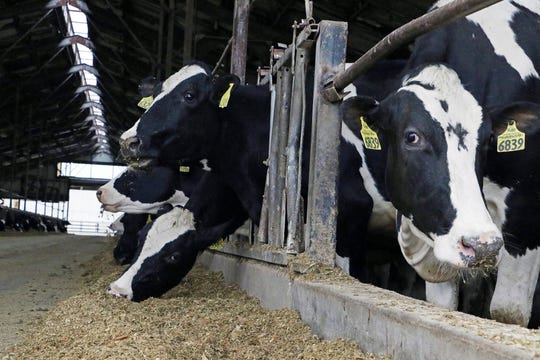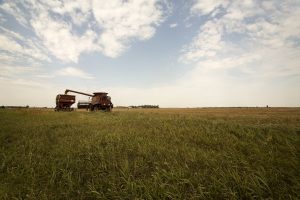
However, USDA is now forecasting 2020 milk prices to average about the same as 2019 with an average Class III of $16.95.
Uncertainty of the impact of the coronavirus outbreak in China on dairy trade and the world economy contributed to Class III dairy futures taking a big fall.
About four weeks ago Class III futures were in the strong $17’s for the first half of the year and reaching the $18’s the second half. But now Class III is below $17 until June and only reaches about $17.60 for a high August through November before falling back in December.
However, I am still of the opinion that milk prices have a high probability of doing better than this. USDA’s lower price forecast is partially based on a relatively strong increase in milk production of 1.7%, continued decline in fluid milk sales and weaker growth in butter and cheese sales.
Leap Year and more
This year is Leap Year with February having 29 days. The increase in milk production corrected for leap year is 1.4%. This is still a lot of milk considering milk production was more than adequate to meet needs last year.
USDA has the average number of milk cows for 2020 just 3,000 head higher than 2019. This seems reasonable considering January 1st dairy replacements were 1% lower than a year ago with replacements per 100 cows the lowest since January 2014. The number of replacements expected calve during the next 12 months was also 1% lower. Dairy cattle slaughter has been running about 2% higher than a year ago.
We can also expect with the financial impact of 4 ½ years of low milk prices there will be a relatively high number of dairy farmers exiting this year. So, the increase in milk production is the result of more milk per cow.
The increase in milk per cow Leap Year adjusted is 1.4%. This is a relatively high increase in milk per cow after a 1.1% increase last year. Rather mild winter weather has helped milk per cow. But lower quality forages being fed until a new crop is harvested this spring and early summer is impacting milk per cow. An increase in milk per cow of 1.0% to 1.2% seems more likely.
Sales and exports
Domestic milk and dairy product sales may do better if the economy remains strong. Dairy exports improved for the last half of 2019 led by strong exports of nonfat dry milk/skim milk powder. Even cheese exports averaged higher for the year.
Some positives for 2020 exports are an expected relatively small increase in world milk production and new trade agreements. A trade agreement with Japan has been finalized where Japan will phase out tariffs over 15 years. But Japan is a big importer of cheese and we can expect an increase in cheese exports in 2020.
The Phase I China agreement has been finalized with expected increased exports in 2020. The USMCA has been signed by Mexico and the U.S. and is waiting for Canada’s approval.
Short-term milk production
Milk production in the months a head will be a major factor where milk prices end up. If there is a strong seasonal flush in production, that would put downward pressure on milk prices. As of now I don’t anticipate a strong flush.
USDA’s milk production report estimates January milk production 0.9% higher than a year ago. Milk cow numbers increased by 5,000 head December to January but were 0.1% lower than a year ago. Milk per cow was just 1.0% higher.
January milk production
January milk production compared to a year ago was up 0.7% in California, 3.7% in Idaho, 3.0% in New Mexico, 7.9% in Texas, 4.5% in Colorado, 5.6% in Kansas, 1.7% in Michigan, 2.2% in New York and 2.9% in South Dakota. But, decreases in production were 2.6% in Arizona, 0.8% in Pennsylvania, 1.5% in Iowa, and 1.0% Wisconsin with no change in Minnesota. Forage quality issues were evident in Iowa and Wisconsin where milk per cow was up just 0.7% in Iowa and 0.2% lower in Wisconsin.
Dairy product prices
Dairy product prices have weakened January and February. On the CME 40-pound cheddar blocks averaged $1.9142 per pound in January and are now $1.80. Cheddar barrels averaged $1.5721 per pound in January, were as low as $1.455 and are now $1.585.
The spread between blocks and barrels was a much as 46 cents and narrowed to 20 cents as the price of barrels increased and blocks fell. We can expect further narrowing. Dry whey averaged $0.352 per pound and is now $0.37. Butter averaged $1.8813 per pound in January and is now $$1.7750. Nonfat dry milk averaged $1.2688 per pound in January and is now $1.1775.
Jan. Class III price
The January Class III price was $17.05, more than $3 lower than the $20.45 Class III back in November. With weaker cheese prices it looks like the February Class III will drop below $17. But if the spring flush is not strong, I could still see cheese prices recovering by late spring with continued improvement through fourth quarter.
Class III could still be in the mid-$17’s by second quarter, the higher $17’s third quarter and reaching $18’s fourth quarter and average near $18 or near a $1 higher than 2019. But, a lot of uncertainty exists, and a lot can happen between now and the year’s end.
Bob Cropp is the emeritus professor in the Department of Agricultural and Applied Economics, University of Wisconsin-Madison
























